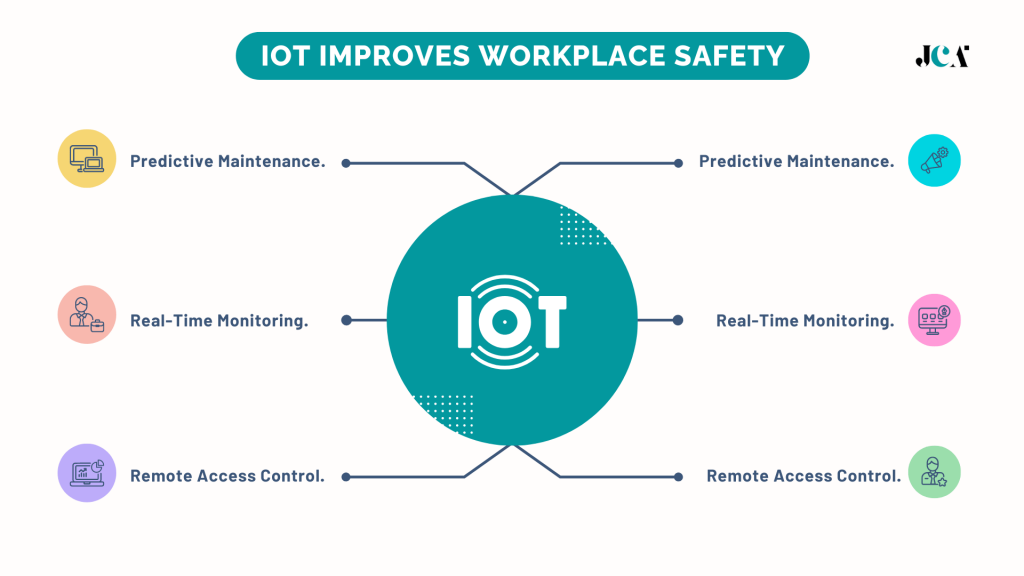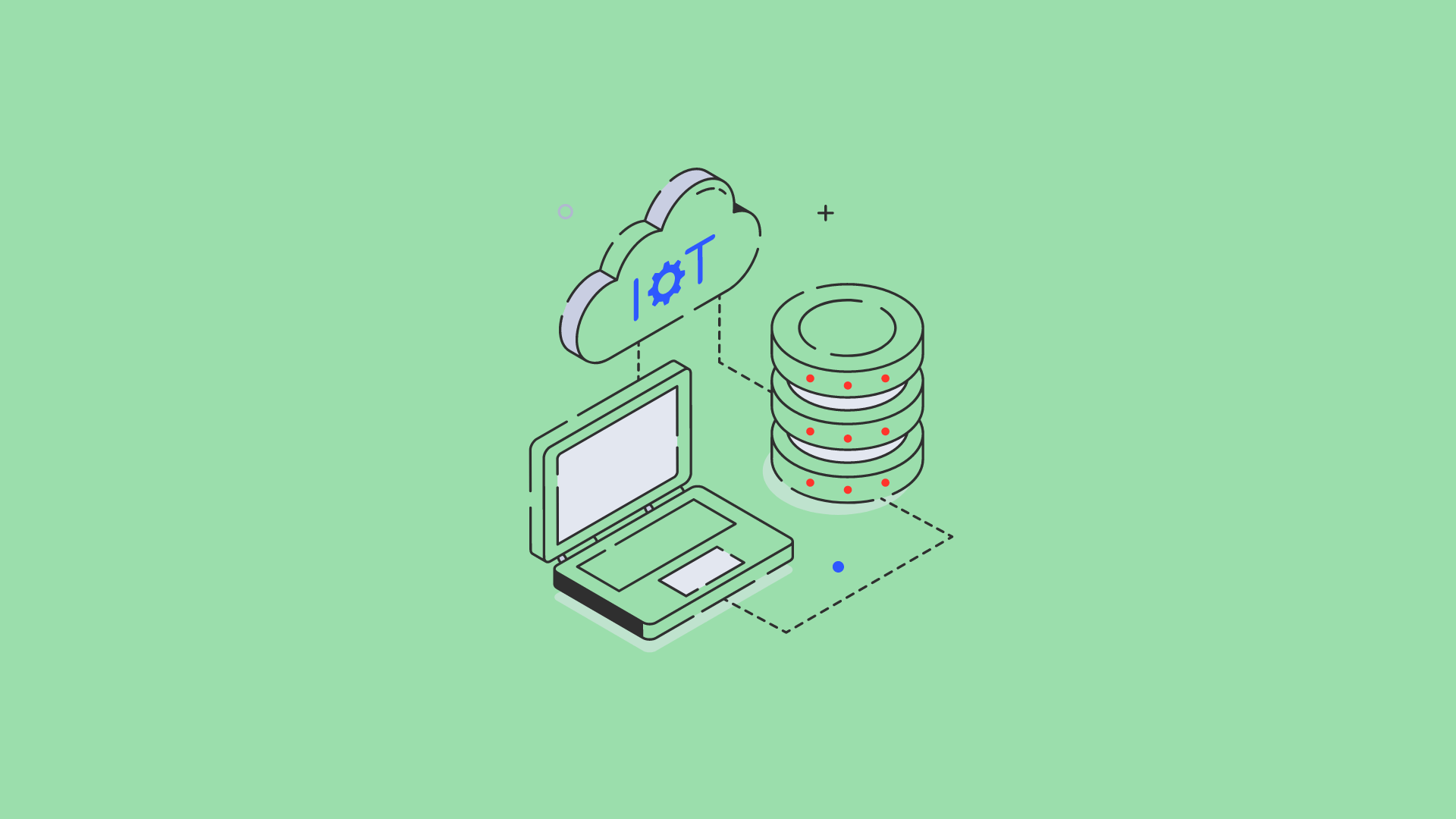Do you know that the global IoT market size is expected to grow from USD 320.9 billion in 2022 to USD 1562.35 billion by 2032. The Compound Annual Growth Rate (CAGR) during the forecast period will be 17.2%.
You will be amazed to know that in 2021, just over a quarter (26 %) of small enterprises used IoT, while large enterprises used it almost twice as much (48 %).
From the above data it’s clear that the IoT for Business market is booming. Today, IoT is everywhere. It’s in homes, factories, as well as in offices too. It’s changing how we live and work. The growth we are witnessing in IoT is really rapid. This growth shows IoT has enough power to change business models. It will make more efficient.
As you know, IoT stands for the Internet of Things. It’s all about connecting devices over the internet. These devices when connected, talk to us, and communicates with each other.
Now it’s time to take a dig at benefits of IoT for businesses across the world.
Before that you can read our latest guide on the role of IoT in industrial automation.
Summary of Key Benefits of IoT for Businesses:
- Cost Savings through Predictive Maintenance
- Increases Operational Efficiency
- Enhances Customer Experience
- Supports Creation of New Business Models and Revenue Streams
- Improves Workplace Safety
- Helps in Data-Driven Decision Making
- Enhances Product and Service Quality
- Sustainable Operations and Environmental Benefits
- Improves Supply Chain Management
- Enhances Security Measures
- Remote Work and Mobility Advancements
- Supports Innovation in Product Development
Have a look at the role of IoT in manufacturing industry.
- What is IoT in Business?
- 12 Benefits of Using IoT for Business
- 1. Cost Savings through Predictive Maintenance
- 2. Increases Operational Efficiency of Business
- 3. Enhances Customer Experience
- 4. Supports Creation of New Business Models and Revenue Streams
- 5. IoT Improves Workplace Safety
- 6. IoT Helps in Data-Driven Decision Making
- 7. Enhances Product and Service Quality
- 8. Sustainable Operations and Environmental Benefits
- 9. IoT Improves Supply Chain Management
- 10. Enhances Security Measures
- 11. Remote Work and Mobility Advancements
- 12. IoT Supports Innovation in Product Development
- Final Words
What is IoT in Business?
In business, the Internet of Things (IoT) refers to the network of physical objects—’things’—embedded with sensors, software, and other technologies to connect and exchange data with other devices over the internet. This integration helps in improving efficiency and enhancing decision-making in businesses.
Business use IoT technology to watch their operations in real time. IoT devices predict when machines will need maintenance. It keeps track of their assets, and offer customers personalized experiences. In the manufacturing industry, IoT sensors can tell if equipment is about to fail before it actually does. This helps in preventing delays and saves money on repair costs.
IoT will continue to revolutionise businesses as it evolves. It’s opening up new opportunities for automated, effective, and customer-focused business models. With IoT at its centre, the future of business is becoming more interconnected. It promises higher levels of creativity and competitiveness.
Industry 4.0, smart manufacturing, smart homes etc. are expected to cause a significant shift in business practices, which will propel the expansion of the internet of things market.
12 Benefits of Using IoT for Business

With the integration of digital intelligence into physical devices, the Internet of Things (IoT) empowers business to leverage data in real-time which more intelligent decision-making. Here are 12 benefits of using IoT for business that underscore its transformative potential:
1. Cost Savings through Predictive Maintenance
Connected sensors installed in a smart way can detect problems before they affect processes or production, saving maintenance costs and preventing downtime.
To minimise inefficient maintenance routines and the associated expenses, manufacturers and network operators should streamline the maintenance process using smart sensors and data science techniques.
According to this McKinsey analysis, IoT-based predictive maintenance can lower factory equipment maintenance expenses by up to 40%. It has the potential to “reduce equipment downtime by up to 50 per cent and reduce equipment capital investment by 3 to 5 percent by extending the useful life of machinery” .
Real Life Examples on How IoT helped in Reducing Costs
The Ericsson Panda manufacturing plant in Nanjing employs Cellular IoT to connect a thousand devices, including high-precision screwdrivers. The modules send out roughly 100 bytes of data every eight hours to show recent usage. The data is stored in a cloud solution for analysis.
Instead of adhering to an inefficient fixed schedule, operations managers can pinpoint exactly when the tools require calibration by analysing usage statistics. According to this case study, Ericsson predicts that the solution, which costs only USD $20 per unit, will reduce maintenance work by half, save USD $10,000 per year, and reach breakeven in just two years.
2. Increases Operational Efficiency of Business
74% of CIOs are giving priority to initiatives that increase operational efficiency, which involves using the appropriate technology and methods to achieve the objective of operating the company as profitably and efficiently as possible.
Connected IoT workplace environments boost productivity through enhanced automation and customisable experiences. Connected devices facilitate the monitoring, control, and management of different corporate operations. When they are integrated, they generate data that can reveal trends and patterns throughout the organisation, allowing for smarter business decisions.
Productivity may skyrocket when you build a linked ecosystem that spans real and virtual areas and allows all employees to move around safely on a daily basis.
The Internet of Things has become more and more essential for business, dealing with asset tracking, employee safety, and operational efficiency. Your IoT solution should advance along with the business growth to continue generating new revenue streams and improving operational efficiency.
pwc.com
3. Enhances Customer Experience
IoT provides numerous opportunities to enhance the consumer experience in the present business landscape. Thanks to technology, the way that customers interact with brands has changed with time. Websites gave businesses more opportunities to interact directly with their customers and laid the groundwork for the success of mobile devices and social media platforms. The emergence of the Internet of Things (IoT) has brought about a profound transformation in the way that customers interact with brands.
IoT data is now used to provide a multitude of services, such as environment, usage, and queries, that can create touchpoints between businesses and their users. IoT data may be strategically used to personalise products and set off alerts, education, and corrective events in order to guarantee the best possible customer and product experience.
Check the complete guide on how to create an IoT app?
4. Supports Creation of New Business Models and Revenue Streams
Using IoT to build new revenue streams from your current products or services can help you develop new business models. With the use of IoT, you may charge your clients according to the value or consumption of your goods or services through subscription-based or pay-per-use business models. IoT can also be used to provide new value-added services that boost client pleasure and loyalty by complementing your core offers with things like maintenance, optimisation, or training.
What Can be the New Business Models and Revenue Streams with IoT?
The Internet of Things allows you to make cash and build business models in a variety of ways. Asset sharing is renting items for a period of time before passing them on to the next person, which keeps things moving and being used effectively. The Outcome Business Model allows you to pay for only what you use, similar to paying for machine time rather than owning it.
Automatic Fulfilment tracks things in supply chains using smart tags, ensuring you always have what you need. Data monetization entails selling the knowledge gleaned from monitoring how items are used or how much energy they require. This allows everyone to make better judgements and maybe leads to more money for everyone.
Also have a look at future of IoT in healthcare.
5. IoT Improves Workplace Safety
With such high expenses involved with worker injuries, forward-thinking businesses are looking for new technology to lower workplace risks. An increasing number of businesses are utilising the Internet of Things (IoT) to monitor and track the numerous internal and external elements that influence worker safety.

Here are few ways that IoT protects workers, increases productivity and safety, and lowers operational expenses on the workplace.
- Predictive Maintenance.
- Real-Time Monitoring.
- Remote Access Control.
- Safety Alerts.
- Location Tracking.
- Speed of Rescue Operations.
- Wearable Devices.
The Internet of Things plays an important part in fostering a culture that promotes worker safety, which increases productivity, morale, and retention among employees and ultimately drives profitability. A company’s reputation for employee care is also a powerful recruiting tool, particularly in the current job market when skilled people are highly sought after and have many options when it comes to where they work.
What are the applications of the Internet of Things (IoT) in education?
6. IoT Helps in Data-Driven Decision Making
IoT generates massive amounts of data, which may be analysed to acquire useful insights. Manufacturers can utilise this data to make informed decisions, identify trends, and estimate demand, allowing them to stay ahead in a competitive market.
Decision making may appear straightforward process, but it is quite complex in practice!
Many business owners and managers make the mistake of viewing decisions through the lens of management, or the boardroom. This is not what we are discussing.
Decisions refer to operational decisions, which are the numerous decisions made during business operations. Consider a manufacturing floor in operation, an aeroplane in flight, a fleet of ships on the high seas, thousands of patients with varying medical needs, logistics, etc. In operations, thousands of small decisions are made on a daily basis. And any decision, no matter how small, can have a significant impact.
So, when using IoT for your organisation, consider operational decision making. Consider the areas of your operations where faster judgements will result in less risk and more money. These are the locations where you should deploy IoT technology.
Perfect Example of How IoT Helps in Data-Driven Decision Making
In 2021, despite traffic decreasing by 27% to 37% since 2019 because of the pandemic, drivers in New York, Chicago, and Philadelphia still spent a lot of time in traffic—102, 104, and 90 hours, respectively. Using real-time data from roadside sensors or smartphones mounted on dashboards to make quick decisions on which roads to take can help reduce traffic jams significantly.
7. Enhances Product and Service Quality
The Internet of Things (IoT) delivers real-time data on equipment performance, industrial processes, and resource utilisation. With this data, manufacturers may optimise processes, streamline workflows, and discover areas for improvement, resulting in enhanced product quality.
IoT connects everyday devices online, making them smart. This technology improves how services comprehend and meet our requirements by learning our habits. By selecting the optimum method for connecting these devices, we ensure that they can share information promptly. It is critical to protect our data, hence IoT employs robust security mechanisms. These smart devices are designed to be energy-efficient and reliable.
They’re also simple to use, with features like intuitive controls and personalised recommendations. As additional devices join the network, IoT technology can scale while retaining service quality. However, innovation must be balanced with concerns like as privacy and cross-brand compatibility.
You may also like: top IoT cloud platforms.
8. Sustainable Operations and Environmental Benefits
IoT is now able to help the use of renewable energy sources, reduce waste, and go beyond enhancing conventional metrics like energy consumption and carbon emissions.
IoT sensors gather information that gives companies a real-time understanding of their environmental impact. They may then monitor energy consumption, cut waste, and improve resource management by using this knowledge to optimise their operations.
IoT sensors, for instance, helps farmers in making more effective use of resources like water and fertiliser. IoT devices in logistics can minimise fuel usage and optimise transportation routes. They monitor material consumption in manufacturing and find ways to cut down on waste in the workflow.
The development of smart grids that more effectively control the distribution and consumption of electricity is made possible by IoT technology. It makes it possible to balance load in real time and use renewable energy sources more effectively. Three to five percent less electricity is consumed in homes using smart metres. Businesses see an increase to 10-12%.
9. IoT Improves Supply Chain Management
Consider an e-commerce company’s warehouse that manages several thousand products. The warehouse uses information from its Internet of Things (IoT) devices to track the number of each product automatically. When the supply drops below a predetermined level, the devices automatically raise an alert or place an order to replenish the stock. That is only one of the numerous changes that IoT can bring about in logistics and supply chain management.
Volvo, Nissan Motor Company, and Amazon are a few businesses that have effectively harnessed the potential of the Internet of Things. Volvo tracks the components of its cars from several nations and the delivery of those automobiles to its clients throughout the world using an IoT supply chain. Nissan connects its many industrial facilities via an IoT supply chain.
By scanning the QR code on parcels, Amazon’s fleet of IoT-enabled robots has been managing warehouse operations. For a business to expand, supply chain management must leverage the Internet of Things. Let’s examine a few advantages and difficulties with IoT in supply chain management.
You might like reading: The Importance of Connected Vehicle Data for Smart Cities.
10. Enhances Security Measures
The integration of the Internet of Things (IoT) in business has significantly boosted security measures. By employing a network of interconnected devices, businesses can now monitor and manage security operations more efficiently and in real-time.
This technology enables automatic alerts for unusual activities, provides round-the-clock surveillance through connected cameras, and even controls access to secure areas remotely.
As a result, IoT not only enhances the capability to preempt potential security breaches but also streamlines the response to incidents, making business environments safer and more secure. With its ability to gather and analyze vast amounts of data, IoT plays a crucial role in identifying trends and vulnerabilities, thereby fortifying a company’s defense mechanisms against threats.
11. Remote Work and Mobility Advancements
Businesses can provide their employees greater autonomy and flexibility to work remotely by implementing Internet of Things technology into the workplace. Let’s examine thoroughly how IoT affects digital world and distant work.
According to Time, about thirty percent of paid workdays will take place in a distributed manner by December 2022. The magazine also notes that, for workers with college degrees, remote employment has increased globally and has increased six-fold alone in the United States since the pandemic’s beginning.
As a result, there is a greater need for goods, services, and technological solutions that facilitate remote cooperation and communication. IoT technology has a lot to offer in that exact area.
Businesses can address problems with real-time insight into problems or malfunctions thanks to the data gathered from connected devices. Companies can use this information to find ways to optimise efficiency, cut waste, and enhance operational procedures.
Also read: How Custom Software Development Helps Businesses.
12. IoT Supports Innovation in Product Development
The Internet of Things (IoT) is revolutionizing product development by catering to increasingly tech-savvy consumers, fostering innovation, and improving analytics. With the proliferation of smart, connected devices, consumers now demand more advanced and beneficial products, pushing developers to continually elevate their offerings.
IoT not only opens up new possibilities for creative product development, encouraging the exploration of innovative ideas, but also provides unprecedented insights into consumer behavior through detailed analytics from connected devices.
This allows developers to fine-tune their products to better meet market needs and reduce reliance on traditional market surveys post-launch, marking a significant shift towards a more agile and multidisciplinary approach to product development.
Final Words
The integration of the Internet of Things (IoT) into business practices offers a multitude of advantages, from enhancing operational efficiency and reducing costs to fostering innovation and improving customer satisfaction. By leveraging real-time data analytics, automating processes, and enabling smarter decision-making, businesses can stay ahead in the competitive market.
Moreover, IoT’s potential to transform product development and service delivery paves the way for new business models and revenue streams. As companies continue to explore the vast possibilities IoT brings, those who effectively harness its power will find themselves well-positioned to lead in the digital age. IoT is demonstrating that the future of business is not just connected but intelligent and responsive to the needs of both the market and the environment.










Leave a Reply